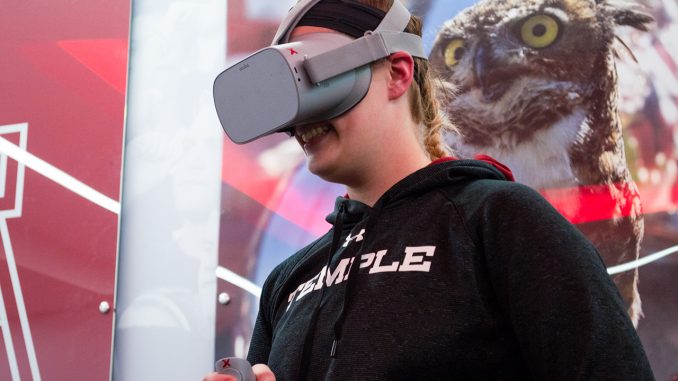
Temple University coach Bonnie Rosen wanted her players to improve their on-field peripheral vision, but that is extremely hard to teach, she said.
She found a way to do so at the Intercollegiate Women’s Lacrosse Coaches Association’s annual meeting in November 2018.
Rosen met a representative from NeuroTrainer, a company that offers virtual reality technology to improve athletic performance, and she quickly incorporated the equipment into her program.
Players started using the VR equipment in Fall 2018. It has helped players train their peripheral vision and helped goalkeepers make saves. It’s a way to blend technology with coaching, Rosen said.
“Our players are much more aware of what their vision is doing and what they’re seeing,” Rosen added. “That is the current gain. It’s hard to totally tell yet whether they’re better at decision-making. And the bottom line is, the app is a way to really train and learn how to use your vision and to get better at things.”
Players use two programs with the VR headsets and Oculus goggles — one for testing and another for training. The first app tests the players’ baseline reaction time.
Training progresses over time and is intended to build players’ skills when not on the field.
With the first app, players tracked specific basketballs among a field of 10 moving basketballs. As the season progresses, VR training gets more intensive. Currently, players track smaller balls while the VR produces distractions that are virtually thrown at the players.
Players are required to do the VR training three times per week for at least 15 minutes. Baseline tests are also required every few weeks.
“It’s really hard to ever see what players see,” Rosen said. “The idea of getting into the virtual reality piece was really exciting. To find software that I could use to help train our vision, peripheral vision work, was really exciting for me.”
In addition to working on peripheral vision, players can use the goggles to scout opponents and review game and practice film.
The team does not have enough individual VR sets for each player to have her own. A handful of players were permitted to bring the VR equipment home with them during winter break.
There is a specific app for the teams’ goalies that simulate game action. The app has its limitations, but for junior goalkeeper Maryn Lowell it is still helpful.
“You can still step to the ball and make the movements you would [in a game],” Lowell said. “You wouldn’t know if you saved it, but you just have to guess about that.”
Players are ranked by their performances in training and testing sessions. Ideally, players will show increasing scores in testing and will move to new skills in the training but ultimately, it’s a new way for players to learn skills, Rosen said.
“Using vision and having to do it on a consistent basis is teaching them a lot, just more about what frustrates them, how to perform under frustration, how to learn new skills,” Rosen added.


Be the first to comment